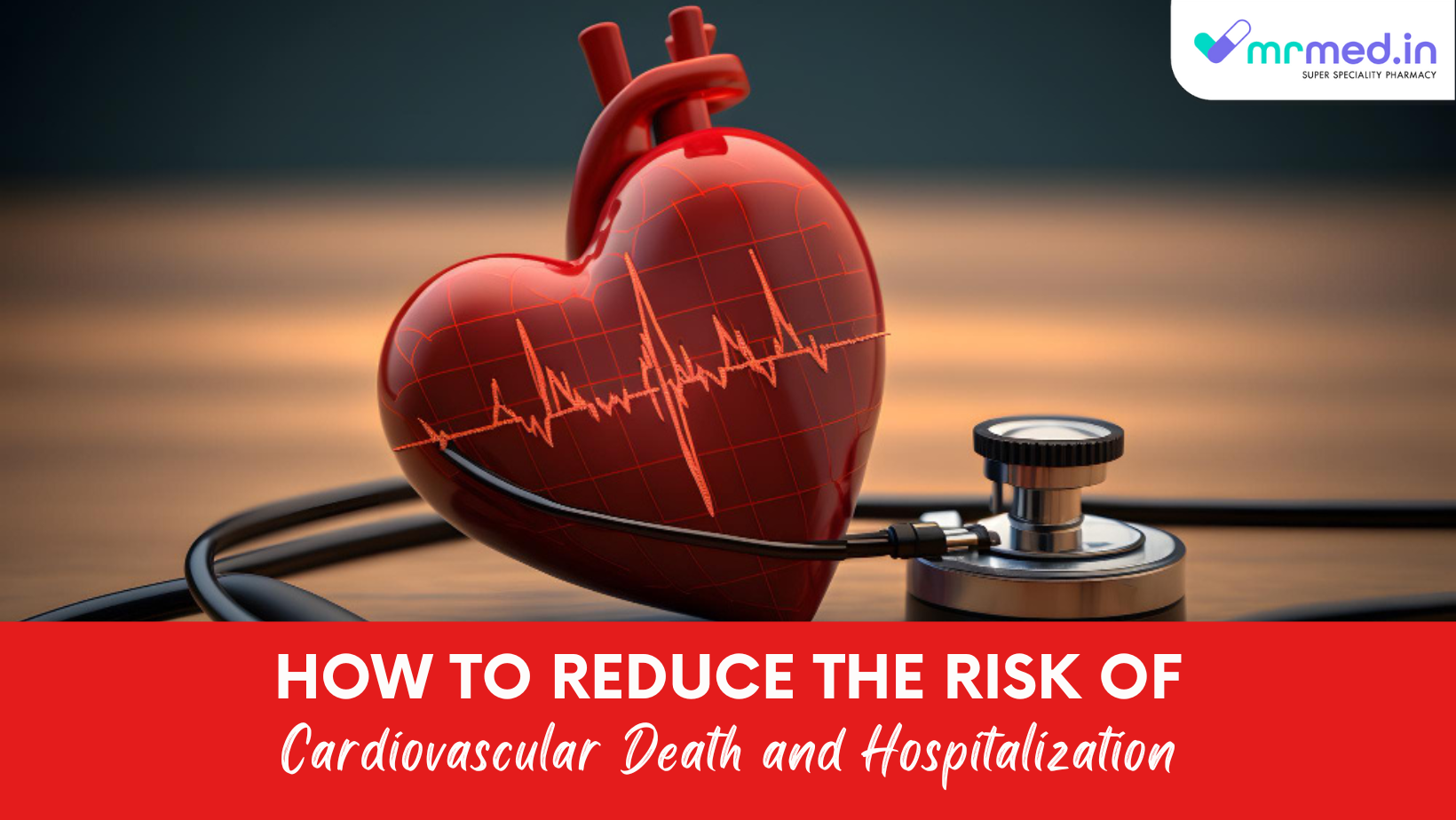Cardiovascular death (CVD) is a common cause of death all around the world. CVD is a group of disorders that affects the heart and blood vessels and can result in coronary heart disease, cerebrovascular disease, rheumatic heart disease, and other conditions. Due to a lack of awareness about the causative agents and management options, patients with cardiovascular disease (CVD) are often hospitalized and face an increased risk of death. Today, we are discussing the methods to prevent or reduce the risk of cardiovascular death and hospitalization in CVD patients.
Cardiovascular disease and its death prevalence
Cardiovascular disease (CVD) is a group of conditions that affects the heart or blood vessels in individuals. It is usually caused by fat deposition inside the arteries and a rise in the risk of blood clotting. CVD can cause damage to arteries that connect the brain, heart, kidney, and eyes.
It is estimated that CVD will lead to 17.9 million people's death in 2019 all over the world. So, it is important to understand the risk factors and the management strategies of CVD before it affects our people.
Symptoms of CVD
- Individuals may experience pain or pressure in the chest (angina)
- You may experience pain or discomfort in the arms, left shoulder, elbows, jaw, or back
- You may experience shortness of breath
- Individuals may experience a vomiting sensation (nausea)
- You may have lightheadedness or dizziness
- Individuals may feel cold and sweating
Risk factors for CVD
- High blood pressure
- High cholesterol
- Tobacco consumption
- Type 2 diabetes mellitus
- Family history of heart diseases
- Lack of physical activity
- Obesity
- High sodium, sugar, and fat diet
- Excessive alcohol consumption
- Gestational diabetes
- Chronic inflammatory diseases
- Chronic kidney disease (CKD)
A Guide to Preventing Cardiovascular Complications and Hospitalization
The CVD and its risk of death can be reduced by the following strategies, which are given below:
1. Medication Adherence:
Medications like Azmarda 100mg Tablet contain two active ingredients, Sacubitril and Valsartan, which are cardiovascular agents and belong to a group of angiotensin receptor-neprilysin inhibitors (ARNi). It is used in the treatment of long-term heart failure in adults. It can be used as a combination with other medications to reduce the risk of death and hospitalization in people with certain types of heart failure.
2. Regular Exercise:
Regular physical activity like brisk walking, running, swimming, cycling, playing tennis, and jumping rope can help reduce the risk of CVD-related death in patients.
3. Diet:
It is advised to eat a diet that is rich in fruits, vegetables, whole grains, lean proteins, and low-fat dairy products and a limited amount of saturated and cholesterol, sodium, and low sugar. Have foods that contain omega-3 fatty acids, such as fatty fish (salmon, mackerel, trout), flaxseeds, and walnuts.
4. Maintain a Healthy Weight:
It is advised to maintain a healthy body weight to reduce the risk of obesity-related cardiovascular issues.
5. Quit Smoking and alcohol consumption:
Smoking can cause severe damage to the arteries of the blood. There is a high risk of heart attack and chest pain (angina pectoris) in people who smoke compared to the person who doesn't smoke. High levels of alcohol consumption is harmful to the heart and can lead to various heart-related problems.
6. Stress management:
It plays a major role in increasing the risk of heart attack by increasing the heart rate and blood pressure. Practice stress-reducing techniques like deep breathing, meditation, yoga, or other relaxation methods can help to reduce the stress and risk of CVD.
7. Regular Health Check-ups
Regular check-up plans with your doctor can help to monitor blood pressure, cholesterol levels, and overall health of the heart.
8. Manage Chronic Conditions:
Conditions like diabetes, high blood pressure, and high cholesterol levels can increase the risk of CVD in patients. It is recommended to control or manage these conditions to maintain a healthy heart.
9. Family History:
Family history plays a major role in the risk of CVD. If you have a family history of high cholesterol, diabetes, or high blood pressure, you may have an increased risk of getting CVD.
Conclusion
Cardiovascular agents and certain proactive steps can effectively lower the risk of cardiovascular death and hospitalization. It is important to protect our loved ones from these deadly diseases. Following proper medication and doctor's advice can help to overcome the CVD-related risk and improve the quality of life.




